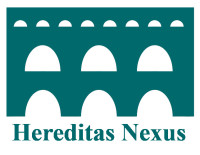 Reviewer: Wouter van Dijk
Reviewer: Wouter van Dijk
The Age of the Vikings, Anders Winroth
Princeton University Press, Princeton, Oxford 2014
ISBN: 978-0-691-14985-1
Hardcover with dust jacket, with maps, illustrations in black and white, further reading section, notes, bibliography and index
304 pages
£ 24,95 / € 26,77 / $ 29,95
Unmasking the popular perception on Vikings
Vikings have a disproportionate bad press, argues Anders Winroth, the author of The Age of the Vikings. Because of their attacking of monasteries and the Church in general, and the fact that the Church almost held the monopoly on literacy in the early Middle Ages, the Vikings still suffer from the distorted image of bloodthirsty heathen devils Christian monks made them in their writings.
In his book, Winroth tries to give the reader a concise but complete view on the Vikings and their society. Naturally, violence was part of that society, but Viking culture was much richer than that. The author writes about trade, religion, farming life, art and literature, which each in its own way, was as representative for the Scandiniavian culture at the time as were the violent raiding campaigns. In his book Winroth debunks some popular myths about the Vikings, such as the ‘carving of the blood eagle’ and the existence of so-called berserkers, both of which spring from a flawed interpretation of early medieval sources by high medieval writers, who also happened to have an excessive imagination at their disposal. Winroth is Professor of History at Yale University.
Winroth shows that the ‘otherness’ of the Vikings so propagated by Christian writers, in fact couldn’t be much further from the truth. He argues that the gift economies that operated in Viking society and the Carolingian Empire under Charlemagne were essentially the same. The fact that Charlemagne’s genocidal campaigns in Saxony and elsewhere are largely forgotten nowadays, is due to the position of the Christian churchmen who wrote our sources. Charlemagne was a Christian and fought against pagans, so his actions were supported by the Church. The Vikings however, aimed their military power at the riches of that Church, and were therefore enemies of God. The Viking image of ferocious barbarians, Winroth argues, is above all a case of bad press. Another myth Winroth debunks, originating from ancient classical writers, is that of the overpopulation of Scandinavia that propelled young Vikings into Europe to look for a living elsewhere. It was much easier, there was simply more to be gained elsewhere. The rich monasteries and trade hubs in Britain and the Carolingian Empire were hardly defended at first, so wealth lay there for the taking for the pragmatic adventurer.
As for the military aspects of Viking culture, Winroth also makes some interesting remarks about trade in Viking society. He argues that the bulk trade wich was so characteristic for the medieval and early modern economy, started in Scandinavia around the year 1000 with fish. Until then, long-distance trade mainly focused on luxury goods. The evidence for this new phenomenon is mainly archaeological. In England for example, a sudden change of diet from fresh water fish as carp and eel to salt water fish as cod and herring can be detected. The rich fishing grounds around Iceland and Norway would have been instrumental in the development of this new branch of trade. Furthermore, the image of Viking society as a patchwork of subsistence farmers is also incorrect. Detailed trade networks existed throughout the Viking world. The site of Sanda in Sweden for example, happened to be a place where large quantities of wheat bread were produced, which points to a use as production centre to feed the elite. It seems plausible to assume the place provided bread for the great trade hub of Birka, positioned some thirty kilometres to the southwest.
These and more interesting theories are raised in Winroths book, which overall gives a very refreshing look on the history of the Vikings, their culture, beliefs and behaviour. Hopefully it will reach a wide audience so that some of the most persistent myths about the Vikings can finally be referred to the realm of fiction. Winroths book is definitely one of the best on the subject I’ve read.
Wouter van Dijk
